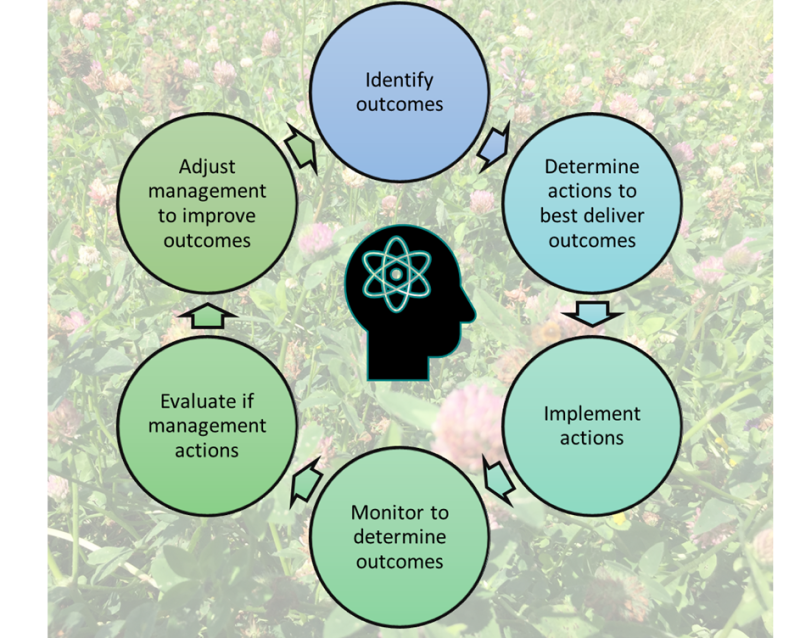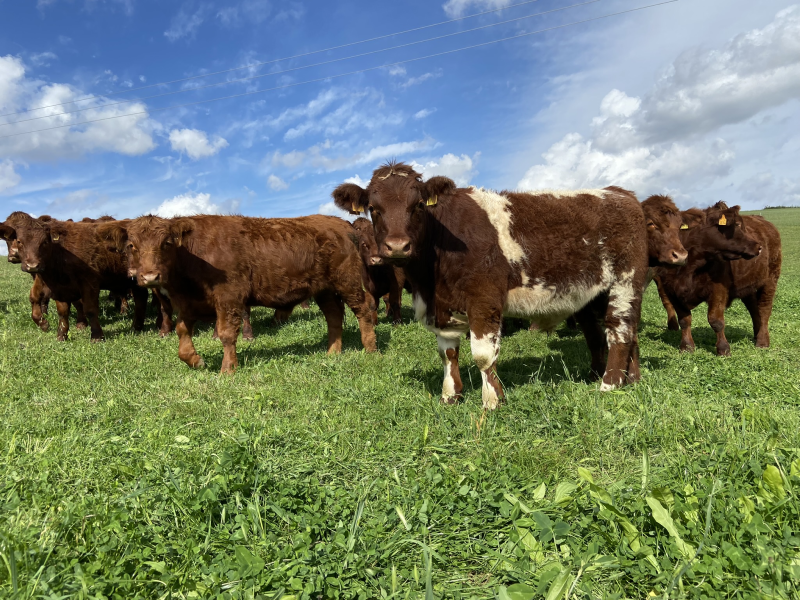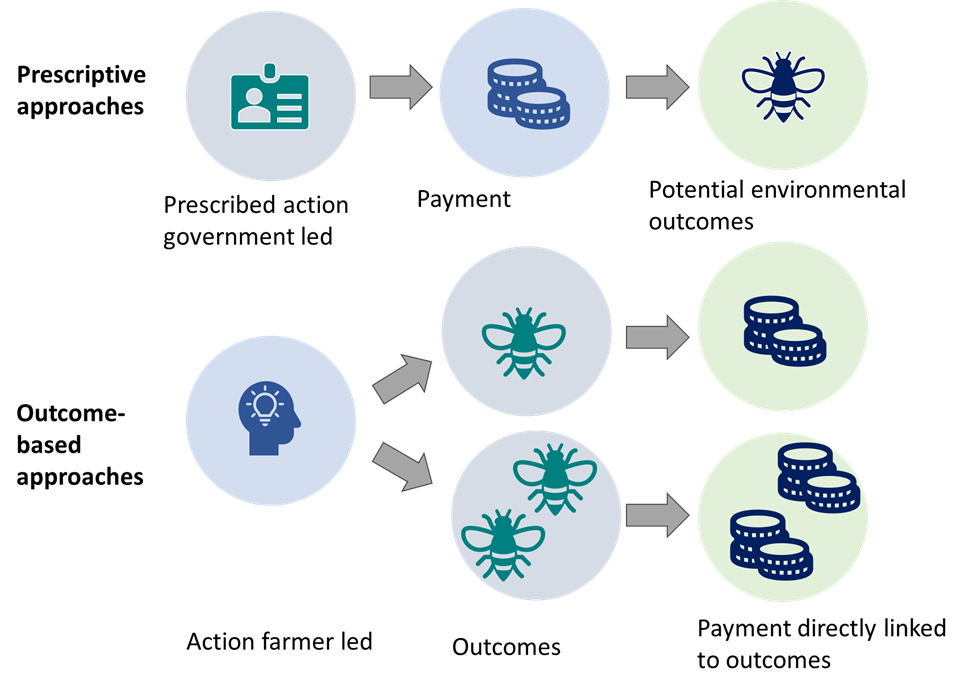Outcome-based Agri-Environment and Climate Schemes
28 February 2024The Agri-Environment and Climate Scheme (AECS) is designed to help farmers and crofters preserve or enhance the wider benefits that their land provides to society. By supporting nature friendly farming this can increase the resilience of the farm business.

The financial support that AECS provides enables farmers to manage, restore and create habitats for the benefit of local species or the wider environment, for example by managing species-rich grasslands, regenerating hedgerows or establishing buffer strips. Through these actions, AECS increases the capacity of farmland to support biodiversity, capture and store carbon, mitigate flooding and cope with extreme weather events, as well as supporting cleaner water and air.
AECS largely works in a prescriptive way – where farmers are paid to deliver a set of pre-defined management actions or prescriptions. Payments reflect the costs of implementing these prescriptive actions as well as the income foregone if those actions have an impact on profitability.
While prescriptive schemes are easier to audit, they don’t allow any flexibility that could ease their implementation in different farming systems. They don’t always reflect geographical constraints and sometimes they are difficult to implement alongside specific agricultural practices. In some instances, the management actions do not deliver the desired consequences. These issues have led us to investigate alternative ways of designing schemes.
Outcome-based Approaches
One alternative is to move from prescriptive-based to outcome-based approaches, also termed payment by results schemes. Here, instead of land managers being paid to deliver specific actions, they are paid based on the outcomes that are achieved. For example, the quality of a hedge, or the botanical richness of a species-rich grassland. Outcome-based approaches typically provide payments on a sliding scale, with the highest level of payment being made when the optimum outcome is reached. Trials have shown that tying payments to actual outcomes gives greater flexibility in how these outcomes are delivered and results in greater benefits.

Unlike prescriptive approaches, outcome-based approaches allow flexibility in how farmers create and manage habitats. They therefore recognise and value the knowledge held by land managers and promote innovation, enabling them to meet the desired outcomes in the way that best suits their farming system and landscape. Farmers know their land best, and as such, have a better understanding of what can work and where the best areas to promote target species are. Indeed, farmers who have trialled outcome-based approaches identify flexibility and freedom as key benefits. With the level of payment increasing with the outcomes achieved, farmers who deliver the greatest benefits are rewarded for doing so. The focus changes from following prescriptive rules to delivering real measurable benefits while maintaining and creating nature-rich habitats.
Monitoring
With outcome-based approaches requiring outcomes to be measured, it is important that monitoring is under the farmer’s control and can be achieved without the additional costs of bringing in experts. Outcomes must therefore be relatively straightforward to monitor, and we therefore need robust user-friendly indicators that reflect the desired outcomes. It is vital that these indicators are reliable, good proxies of habitat quality and easily deployed by farmers following basic training.
In their Piloting an Outcomes Based Approach in Scotland (POBAS) project, NatureScot are developing a range of user-friendly scorecards to help farmers monitor the quality of their nature-rich habitats. These scorecards outline sets of criteria that farmers then use to assess their different habitats. Using a few questions, the scorecard method ensures that farmers are assessing each type of habitat in the same way across the farm, and with all farmers assessing the same criteria scores are reliable across different farms. For example, a hedgerow scorecard could consider aspects relating to the presence of gaps in the hedgerow, its physical structure (height, width, shape), the number of shrub species found, and information on management. Farmers can then use this to easily identify management actions that will increase their score through targeting poor scoring criteria (e.g. gapping-up a hedgerow or changing the frequency of cutting).
Unlike with prescriptive approaches, this flexibility and focus on habitat quality gives farmers the freedom to innovate and experiment. They can explore different ways of managing habitats that best suits their own farm and landscape. Through monitoring outcomes, they can evaluate the impact of their current management, identify potential improvements, and refine management to optimise both sustainable food production and agri-environmental outcomes. Adopting an adaptive management approach therefore allows for continuous refinement and improvement in outcomes delivered.


Images Credit: L. Cole, SAC Consulting
Considerations
Outcome-based schemes do, however, come with an element of risk and require more knowledge and experimentation on the farmer’s part, and as such, may not be for everyone. NatureScot’s scorecards are designed using robust indicators that are largely within the farmer’s control and can be directly impacted by farm management. Thorough testing is, however, required to avoid unintended consequences and unfair scoring. NatureScot’s pilot is using farmers’ feedback and repeated testing to highlight any issues, and to make sure farmers are confident in the methodology and the result of the scorecards.
While outcome-based approaches have huge potential, they may not suit everyone. For example, payments that are only made when the desired outcomes have been realised may leave farmers out of pocket if the outcomes take time to be realised. Because of the variable nature of some management actions, it might take trial and error to get the right outcome in the right place. To help ensure that schemes are widely accessible, there is the potential to adopt a hybrid approach, where a base payment is linked to delivering certain actions, and then additional payments could be made based on the outcomes delivered.

Dr Lorna Cole, SAC Consulting
Useful Links
Sign up to the FAS newsletter
Receive updates on news, events and publications from Scotland’s Farm Advisory Service

